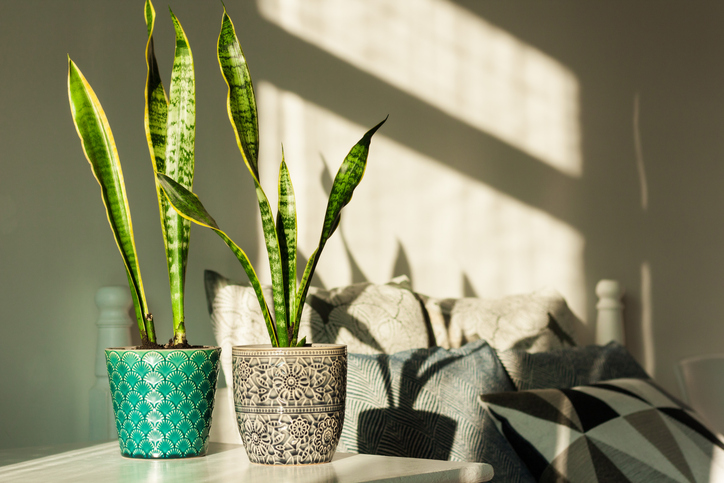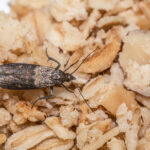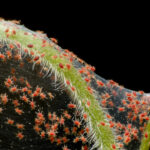Arizona’s dry climate can be tough on houseplants, and even tougher when pests move in. In an effort to keep plants hydrated, many homeowners end up overwatering, creating the perfect environment for insects like spider mites, fungus gnats, scale insects, and mealybugs. These pests thrive in moist soil, feed on weak plants, and can even spread into other areas of the home.
If you’re starting to notice webs, sticky leaves, or tiny bugs hovering around your indoor greenery, you’re not alone. Here’s what you need to know about common houseplant pests in Arizona and how to get them under control.
Common Houseplant Pests in Arizona Homes
Overwatered soil, poor airflow, and stressed plants open the door to several types of pests:
- Spider mites. These tiny, sap-sucking pests prefer hot, dry conditions but thrive when plants are weak or dusty. Yellow stippling on leaves or fine webbing under foliage are common signs of spider mites on houseplants.
- Fungus gnats. Often mistaken for fruit flies, fungus gnats breed in damp soil. Larvae feed on organic material and delicate roots, leading to root rot and stunted growth.
- Scale insects. Scale insects attach themselves to stems and leaves, feeding on plant sap and leaving behind a sticky residue known as honeydew. This can lead to mold growth and attract ants.
- Mealybugs. These white, yellow, or gray, cottony insects hide in leaf joints and under leaves. Like scale, they feed on plant juices and excrete honeydew, weakening plants and making them more vulnerable to disease.
How To Prevent Problems With Houseplant Pests

Keeping houseplant pests at bay starts with a few simple habits:
- Water wisely. Arizona’s dry air can tempt even experienced plant owners to overcompensate. Instead, water only when the top inch or two of soil feels dry. Avoid letting water sit in saucers, which invites fungus gnats and root rot.
- Inspect plants routinely. Check leaves, especially undersides, and stems at least once a week. Look for bugs, sticky residue, or discoloration. Early detection can prevent an infestation from spreading.
- Improve air circulation. Use a fan or space plants apart to increase airflow. Good circulation discourages spider mites and prevents overly damp conditions that pests love.
- Isolate new plants. Quarantine any new plant for a couple of weeks before adding it to your collection. This gives you time to catch any hidden pests and prevent them from spreading.
Best Indoor Plants for Arizona Homes That Resist Pests

Some houseplants are more resilient and less attractive to bugs in homes. These low-maintenance options tend to handle Arizona’s indoor climate well:
- Snake plant (Sansevieria). Tolerates dry air, doesn’t need much water, and rarely attracts pests
- ZZ plant (Zamioculcas zamiifolia). Known for its hardy leaves and pest resistance, ideal for low-light areas
- Pothos (Epipremnum aureum). Easy to grow, thrives in a variety of conditions, and naturally resists many common pests
- Aloe vera. Prefers dry soil and bright light. Susceptible to a few pests if kept dry
- Spider plant (Chlorophytum comosum). Resilient and rarely affected by insects when not overwatered
Stick to drought-tolerant varieties and avoid overwatering, especially in Arizona homes where humidity is low.
What To Do When Pests Move Beyond Houseplants
What starts in a pot can spread. Fungus gnats may lay eggs in other damp areas, and spider mites or ants can infest drapes, baseboards, or even pantry items once they leave the plant. If houseplant pests have found their way into other areas of your home like your kitchen, it’s time to act with residential pest control.
Call Burns Pest Elimination for Arizona Pest Control
If bugs have taken hold in your home and natural remedies aren’t cutting it, Burns Pest Elimination can help. In addition to plant pest identification, our experienced team knows how to handle infestations common to Arizona homes, from houseplants to baseboards and beyond. Request a free quote to learn how to take back your indoor space with us today!
Frequently Asked Questions About Houseplant Pests
What causes fungus gnats in houseplants?
Fungus gnats are attracted to overly damp soil. Overwatering and poor drainage create ideal breeding conditions, especially in potting mixes with a high organic content.
How do I get rid of spider mites on indoor plants?
Spray plants with water to knock off mites, then treat with neem oil or insecticidal soap. Increasing humidity and improving airflow also help deter them.
Are scale insects harmful to houseplants?
Yes, scale insects feed on plant sap and excrete a sticky substance called honeydew, which can lead to mold growth and attract ants. Over time, they can weaken or even kill the plant.
What’s the best way to treat a mealybug infestation?
Wipe affected areas with a cotton swab dipped in rubbing alcohol, then spray with neem oil. Repeat weekly until the pests are gone.
Can houseplant pests spread to other parts of the home?
Yes. Fungus gnats may move to other moist areas, and ants attracted to honeydew can infest kitchens or pantries. Early intervention is key.
What are signs that houseplants have a pest problem?
Look for sticky residue, yellowing or curled leaves, visible bugs, webbing, or mold. Catching these signs early helps prevent a larger infestation.



